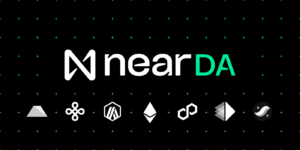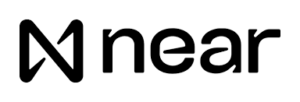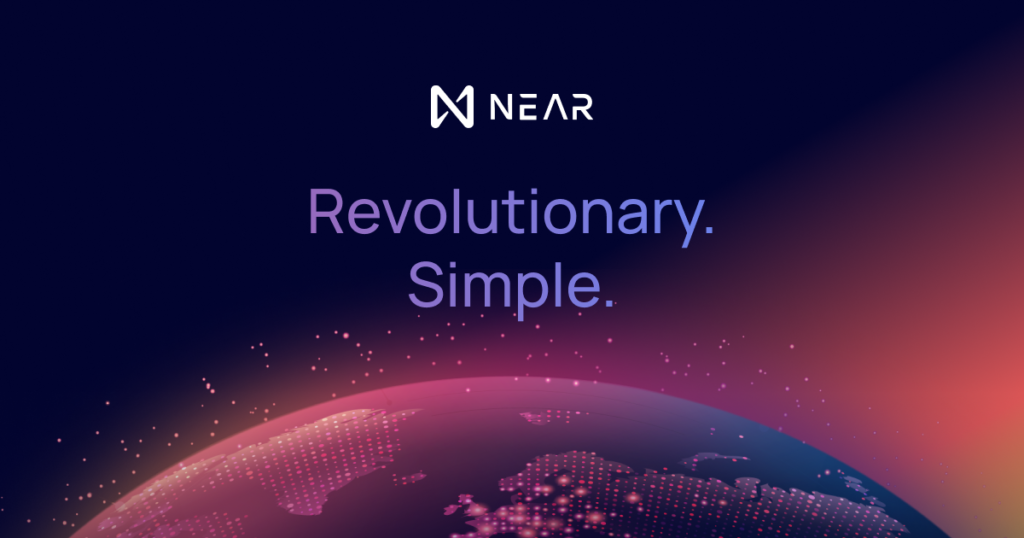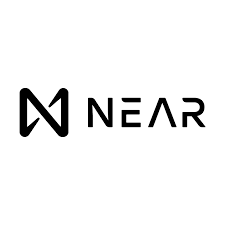Latest News
- Best New Cryptos to Buy Now for Profits Up to 1000X by This Summer
- Render (RENDER) and Near Protocol (NEAR) Spearhead Crypto Surge
- AI Ecosystem or Layer 1 Speed? NEAR, Kaspa, & This AI ICO Compared
- Assessing the odds of NEAR’s reversal signal fueling a 15% hike
Current Price
The current price of NEAR is $2.24593
Introduction
Welcome to our NEAR Protocol review.
NEAR Protocol is a remarkable layer-one blockchain, distinguished by its innovative sharding approach and the Nightshade consensus mechanism, which together facilitate impressive transaction throughput and minimal latency.
With a robust emphasis on developer experience and a diverse ecosystem spanning decentralized finance, gaming, and NFTs, NEAR presents significant opportunities for both creators and users alike.
However, as we explore its features and potential trajectory, questions arise regarding its sustainability and competitive positioning within the broader blockchain landscape.
What does the future hold for NEAR, and how might it navigate the challenges ahead?
Find the answers in this review!
Quick Overview
- NEAR Protocol is a scalable layer-one blockchain utilizing sharding and Nightshade consensus for high transaction throughput and low latency.
- It supports multiple programming languages for smart contract development, making it accessible and developer-friendly.
- NEAR offers user-friendly features like human-readable account names and extensive documentation to enhance the user experience.
- Key use cases include decentralized finance (DeFi), gaming, NFTs, and cross-chain interoperability, fostering diverse applications and liquidity.
- The roadmap emphasizes scalability, interoperability, and community involvement, positioning NEAR as a significant player in the blockchain ecosystem.
Overview of NEAR Protocol
Here is a great overview video about NEAR protocol:
As blockchain technology continues to evolve, NEAR Protocol emerges as a significant player, designed to address the scalability and usability challenges faced by earlier platforms.
Constructed as a layer-one blockchain, NEAR utilizes a unique architecture that incorporates sharding to enhance transaction throughput and reduce latency. This method facilitates parallel processing, enabling the network to handle thousands of transactions per second, thereby overcoming congestion issues encountered by legacy systems.
Moreover, NEAR Protocol employs a developer-friendly approach, featuring a straightforward onboarding process that minimizes barriers to entry for new developers.
Its use of WebAssembly (Wasm) for smart contracts allows for greater flexibility and performance, as developers can write contracts in multiple programming languages. The protocol’s emphasis on user experience extends to its wallet functionality, which simplifies transaction processes through human-readable account names instead of cryptographic addresses.
In addition, NEAR’s consensus mechanism, Nightshade, combines elements of Proof-of-Stake (PoS) and sharding to guarantee security and efficiency.
This innovative design not only enhances scalability but also promotes decentralization.
Key Features of NEAR
The NEAR Protocol is distinguished by its robust scalability and performance capabilities, enabling it to handle a high volume of transactions efficiently.
Additionally, it offers user-friendly development tools that simplify the process for developers, fostering an accessible environment for dApp creation.
These features collectively position NEAR as a compelling choice in the competitive landscape of blockchain platforms.

Scalability and Performance
One of the standout features of NEAR Protocol is its robust scalability, which enables the network to handle thousands of transactions per second without compromising performance. This capability is largely attributed to its unique architecture and the implementation of sharding, which divides the network into smaller, manageable segments called shards. Each shard processes transactions in parallel, thereby considerably increasing throughput while maintaining low latency.
NEAR utilizes a novel consensus mechanism known as Nightshade, which enhances the network’s efficiency by allowing validators to work on different shards concurrently. This design choice not only optimizes resource utilization but also minimizes the overhead associated with traditional consensus protocols.
Additionally, NEAR’s dynamic scaling adapts to network demand, guaranteeing that the protocol can accommodate varying workloads without degrading performance.
The combination of these technical innovations positions NEAR Protocol as a leading solution for decentralized applications that require high throughput and quick response times. As the blockchain landscape continues to evolve, NEAR’s focus on scalability and performance guarantees it remains competitive, providing a robust infrastructure that can support the growing demands of users and developers alike.
User-Friendly Development Tools
Frequently recognized for its developer-centric approach, NEAR Protocol offers a suite of user-friendly development tools designed to streamline the creation of decentralized applications. Central to this ecosystem is the NEAR SDK, which supports multiple programming languages, including Rust and AssemblyScript, thereby reducing barriers to entry for developers familiar with these languages.
This flexibility allows for rapid prototyping and deployment, fostering innovation within the NEAR community.
Additionally, the protocol features a built-in account model that simplifies user onboarding, eliminating the need for complex wallet setups. By utilizing human-readable account names instead of cryptographic addresses, NEAR enhances user experience, facilitating broader adoption of dApps.
For developers seeking to optimize their applications, NEAR provides extensive documentation and tutorials, ensuring that resources are readily accessible.
Moreover, the NEAR CLI (Command Line Interface) empowers developers with essential tools for deploying and managing smart contracts seamlessly.

Developer Experience
The developer experience on NEAR Protocol is intricately designed to foster efficiency and innovation, making it an attractive environment for blockchain developers. One of the primary features enhancing this experience is the use of Rust and AssemblyScript for smart contract development, languages that are widely known and provide strong typing and performance. This choice allows developers to leverage existing skills while ensuring robust application performance.
NEAR’s unique architecture, centered around sharding, abstracts complex blockchain mechanics, enabling developers to focus on building applications without deep diving into intricate consensus algorithms. The protocol’s extensive documentation, along with the NEAR Explorer, provides in-depth insights into the network’s functionality, streamlining the onboarding process for new developers.
Moreover, NEAR offers a range of developer tools, including the NEAR SDK and command-line interface (CLI), which facilitate seamless application deployment and management. The integration of a web-based wallet simplifies user interaction, reducing friction for developers when creating decentralized applications.
Additionally, the NEAR community actively supports developers through forums and hackathons, encouraging collaboration and knowledge sharing. Overall, NEAR Protocol’s developer experience is structured to promote rapid development cycles and foster a vibrant ecosystem of innovative blockchain solutions.
Use Cases and Applications
The NEAR Protocol presents a diverse array of use cases, particularly in decentralized finance (DeFi), gaming, and non-fungible tokens (NFTs), offering innovative opportunities for developers and users alike.
Its architecture facilitates cross-chain interoperability, enabling seamless communication and transaction execution across various blockchain networks.
As these applications continue to evolve, the potential for NEAR to reshape digital ecosystems becomes increasingly evident.
Decentralized Finance Opportunities
Exploring the decentralized finance (DeFi) opportunities on the NEAR Protocol reveals a landscape rich with innovative use cases and robust applications. The NEAR Protocol, with its unique architecture and scalability, is well-suited for a variety of DeFi functionalities, paving the way for a more inclusive financial ecosystem.
Key opportunities include:
- Decentralized Exchanges (DEXs): NEAR facilitates the creation of highly efficient DEXs, enabling users to trade assets without intermediaries, thereby reducing costs and improving liquidity.
- Lending and Borrowing Platforms: With smart contracts, NEAR can support peer-to-peer lending mechanisms, allowing users to earn interest on their assets while providing liquidity to borrowers.
- Stablecoins: The Protocol’s scalability makes it an ideal platform for issuing stablecoins that maintain value stability, essential for transactions and savings in a volatile market.
- Yield Farming: Users can leverage NEAR’s high throughput to participate in yield farming opportunities, optimizing returns on investment by utilizing various DeFi protocols concurrently.
These applications not only enhance financial accessibility but also drive the continuous evolution of the DeFi landscape on the NEAR Protocol.

Gaming and NFTs
NEAR Protocol’s innovative capabilities extend beyond decentralized finance, making it a compelling platform for gaming and non-fungible tokens (NFTs). Its architecture is designed to handle high throughput and low latency, essential attributes for gaming applications that require real-time interactions.
NEAR’s sharding technology enables the processing of multiple transactions simultaneously, resulting in seamless gameplay experiences and reduced lag, which can be critical in competitive gaming scenarios.
In the domain of NFTs, NEAR Protocol offers a user-friendly environment for creators and collectors. The protocol supports various standards for NFT creation, facilitating easy minting and trading.
Its integration with decentralized applications (dApps) allows developers to build rich, immersive experiences that leverage the unique characteristics of NFTs, such as ownership provenance and scarcity. Furthermore, NEAR’s focus on user onboarding simplifies the process for gamers and NFT users, potentially driving mass adoption.
The NEAR ecosystem is also witnessing collaborations with various gaming projects, indicating a robust interest in utilizing blockchain for asset ownership and in-game economies.
This synergy between gaming and NFTs on NEAR Protocol positions it as a significant player in the evolving landscape of blockchain technology, catering to developers and users alike.
Cross-Chain Interoperability Solutions
Facilitating seamless communication between diverse blockchain networks, cross-chain interoperability solutions have emerged as a critical innovation in the decentralized ecosystem.
These solutions enable the transfer of assets and data across different blockchain platforms, enhancing the functionality and utility of decentralized applications (dApps).
The NEAR Protocol is particularly well-positioned to leverage cross-chain capabilities, offering several use cases and applications:
- Asset Transfer: Users can move tokens between blockchains, facilitating liquidity and broader market access.
- Decentralized Finance (DeFi): Cross-chain protocols allow for diverse financial products that utilize assets from various networks, increasing capital efficiency.
- Interoperable DApps: Developers can create applications that function across multiple blockchains, providing enhanced user experiences and broader user bases.
- Data Sharing: Cross-chain solutions enable the sharing of data securely and reliably, fostering collaboration among decentralized networks.
Future Potential and Roadmap
The future potential of NEAR Protocol is anchored in its innovative approach to scalability, interoperability, and usability, which positions it as a formidable player in the blockchain ecosystem.
NEAR’s unique sharding architecture allows for dynamic scaling, enabling the network to process thousands of transactions per second without compromising security. This scalability is critical as demand for decentralized applications (dApps) continues to rise.
Moreover, NEAR’s commitment to interoperability facilitates seamless communication between different blockchain systems, making it an attractive platform for developers looking to build cross-chain solutions.
The implementation of the NEAR Rainbow Bridge exemplifies this capability, enhancing asset transfers and data exchange across networks, thereby broadening its utility.
Looking ahead, NEAR’s roadmap prioritizes further enhancements in developer experience, including improved tooling and documentation, which will likely attract a greater number of dApp developers.
Additionally, the introduction of new governance features aims to foster community involvement and decentralized decision-making.
As NEAR Protocol continues to evolve, its strategic focus on scalability, interoperability, and user-centric design positions it well to capitalize on the growing demand for blockchain solutions, potentially solidifying its status as a leading platform in the decentralized landscape.
Frequently Asked Questions
What Are the Main Competitors of NEAR Protocol?
The main competitors in the blockchain ecosystem include Ethereum, Solana, Polkadot, and Avalanche. Each offers distinct features such as scalability, transaction speed, and developer support, contributing to a highly competitive landscape for decentralized applications.
How Can I Buy NEAR Tokens?
To acquire NEAR tokens, utilize cryptocurrency exchanges that support them, such as Binance or Coinbase. Create an account, complete verification, deposit funds, and execute a market or limit order to purchase the desired quantity of tokens.
Is NEAR Protocol Environmentally Friendly?
The environmental impact of blockchain technologies is significant. NEAR Protocol employs a proof-of-stake consensus mechanism, which is generally more energy-efficient than proof-of-work alternatives, thereby promoting sustainability and reducing carbon emissions associated with cryptocurrency transactions.
What Wallets Support NEAR Tokens?
Several wallets support NEAR tokens, including NEAR Wallet, Ledger, Trust Wallet, and MetaMask. Each wallet offers varying features such as security, user interface, and compatibility, catering to different user preferences and needs in token management.
How Does NEAR Handle Security and Governance?
Security in blockchain systems typically involves cryptographic protocols and consensus mechanisms, while governance often incorporates decentralized decision-making frameworks. Effective management of both aspects guarantees user trust, mitigates risks, and fosters community engagement within the ecosystem.
Wrapping Up
To summarize, NEAR Protocol demonstrates significant advancements in blockchain technology through its innovative use of sharding and the Nightshade consensus mechanism, facilitating high scalability and low latency.
The support for multiple programming languages enhances its appeal to developers, while its applications in decentralized finance, gaming, and NFTs highlight its versatility.
With a clear roadmap for future development and a commitment to community engagement, NEAR is well-positioned to maintain its relevance and influence within the blockchain ecosystem.
